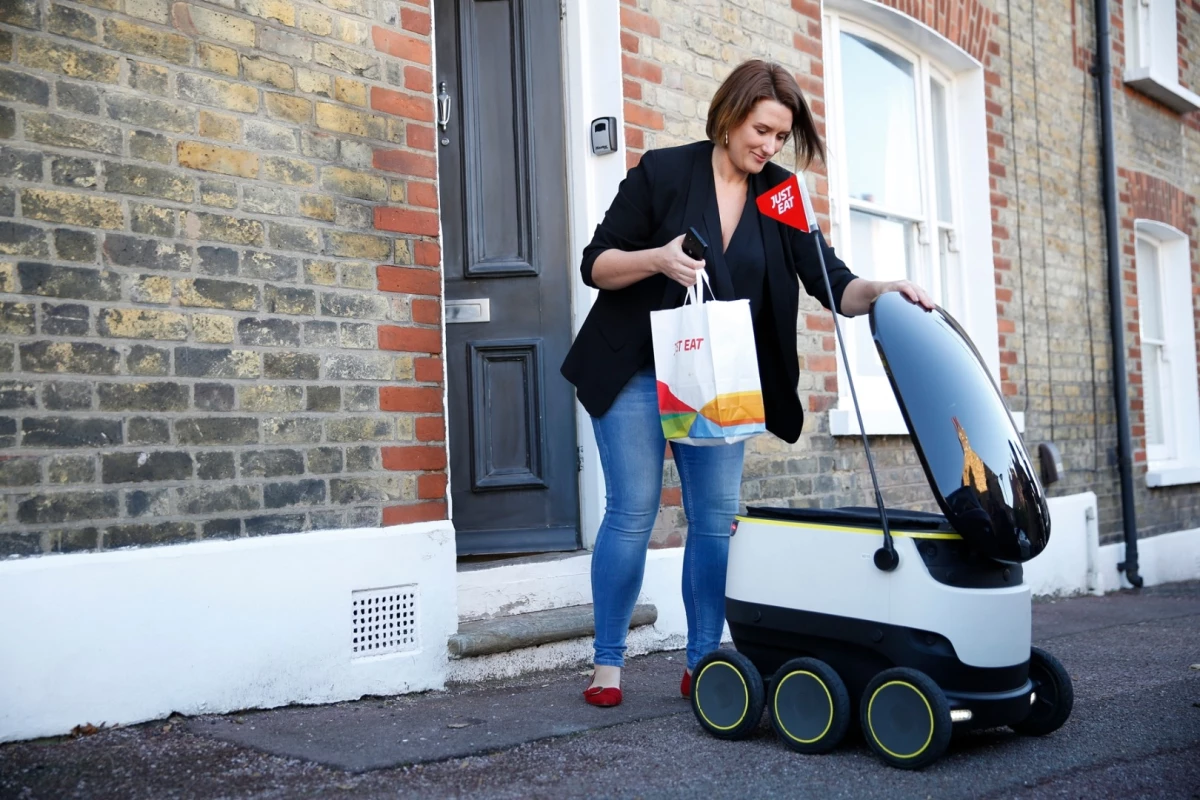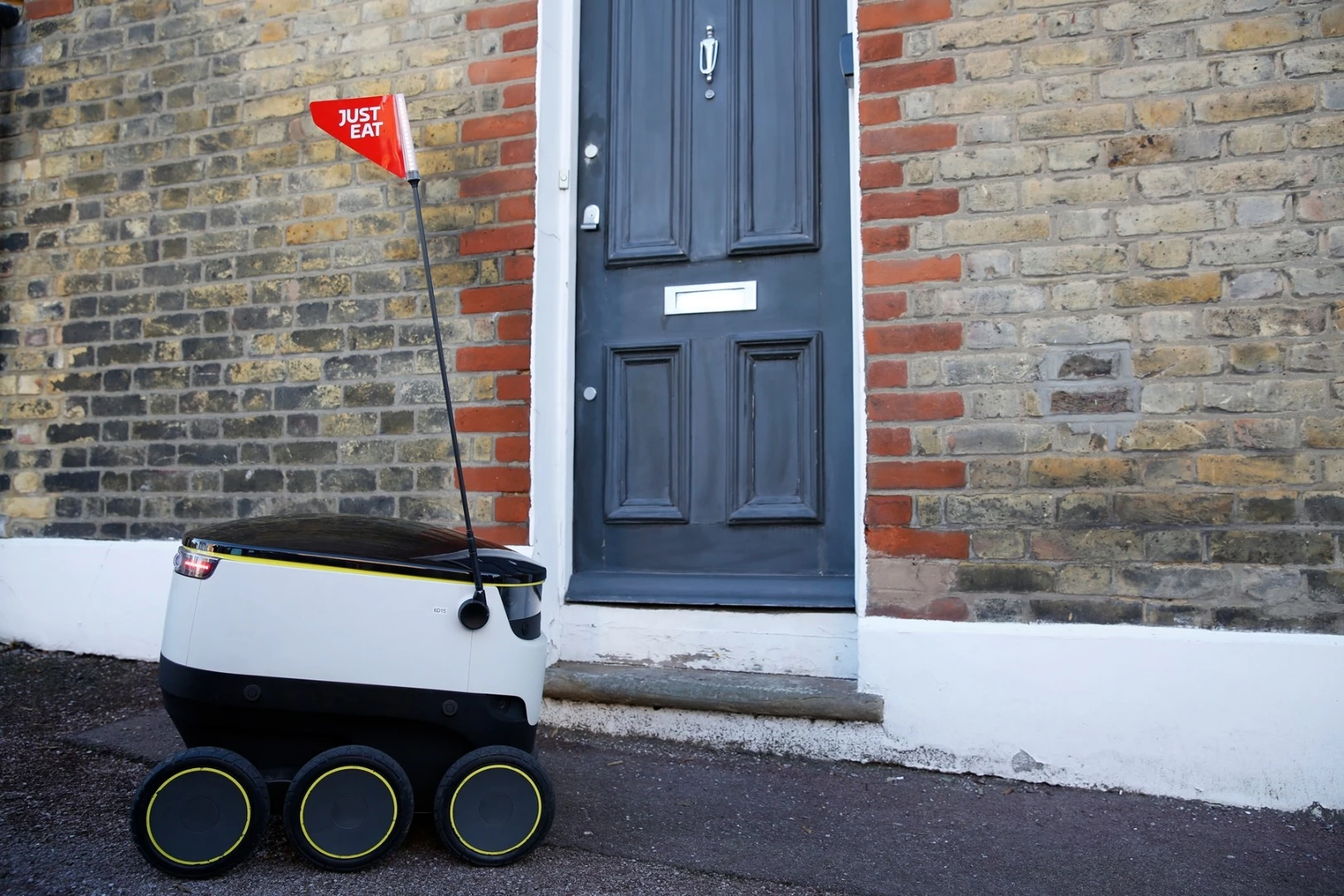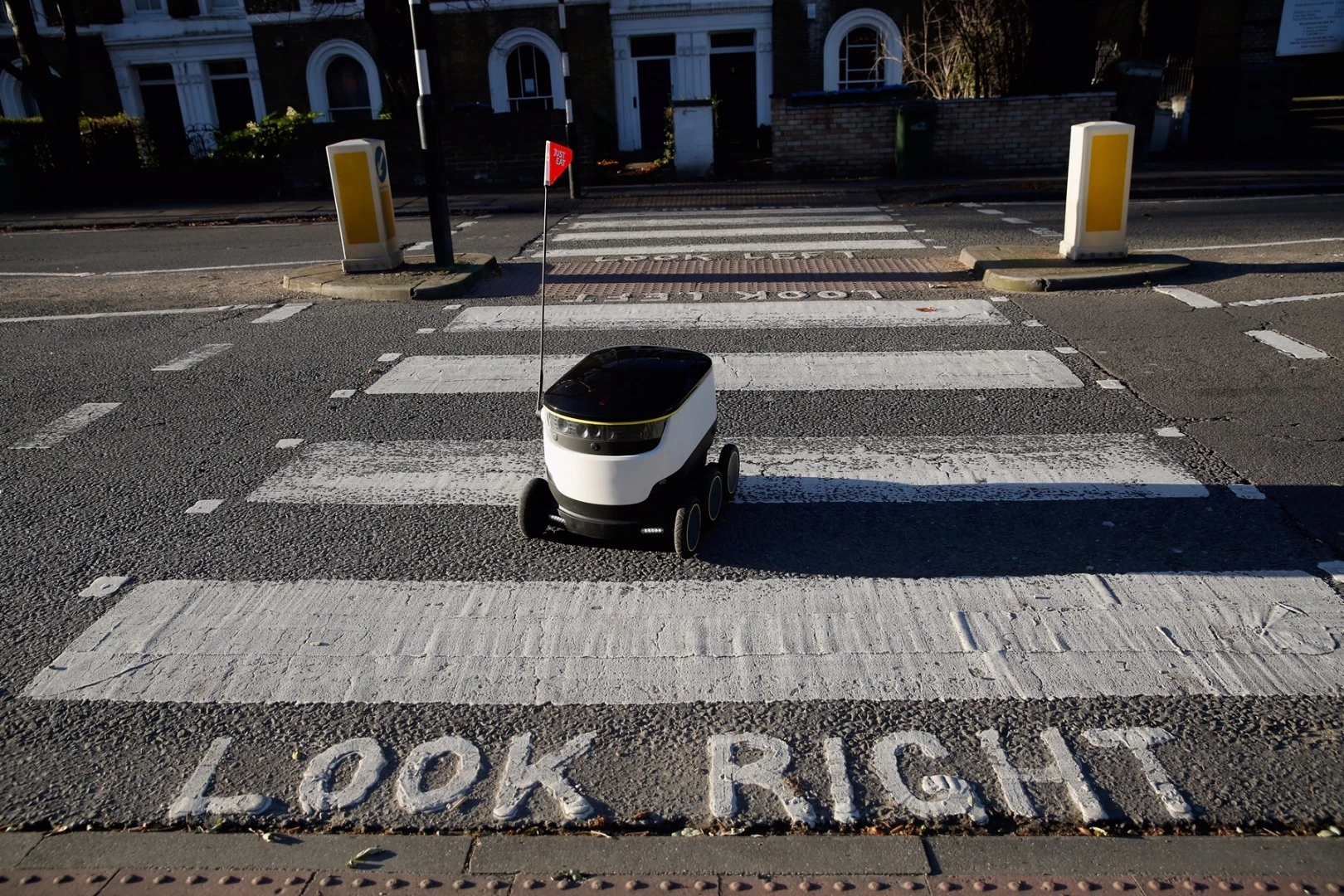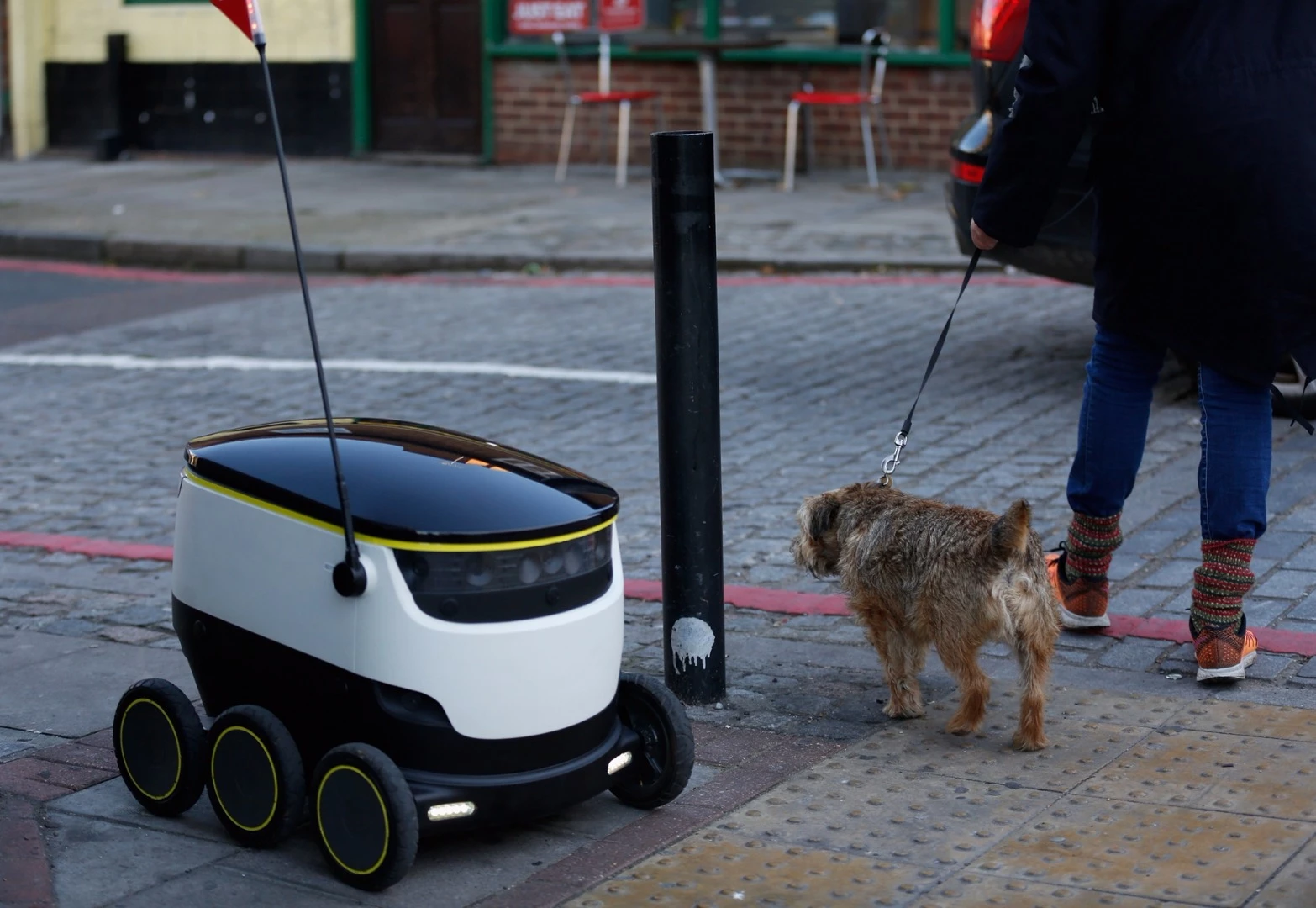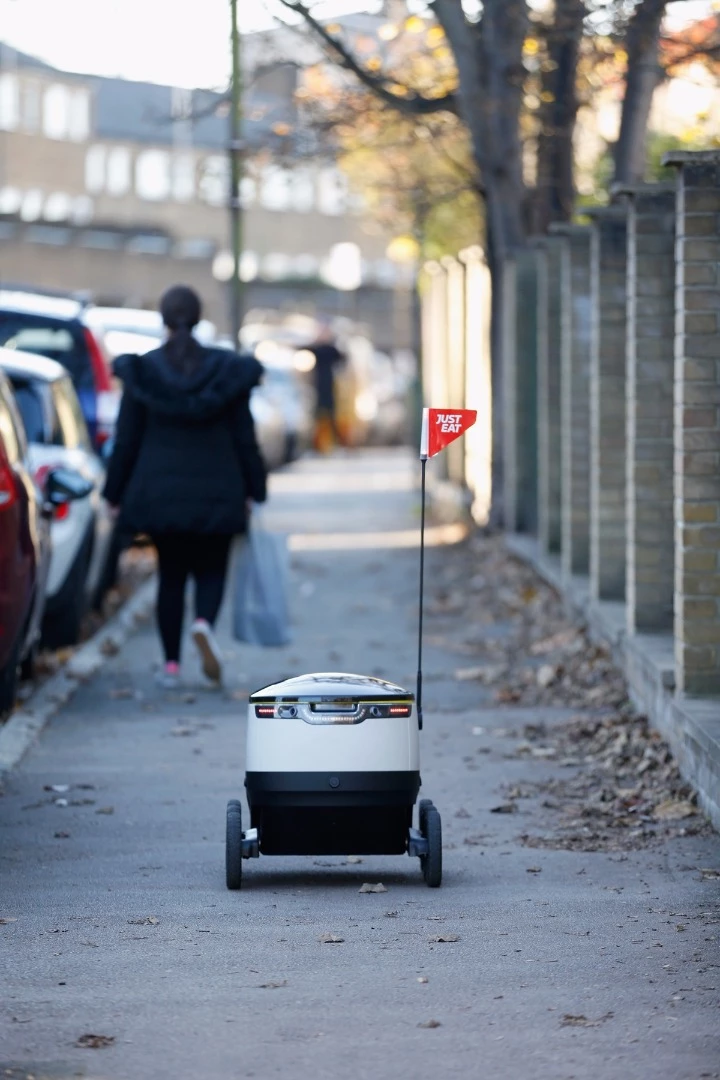Just Eat claims to have made the world's first ever online food delivery using a self-driving robot. As part of the takeaway food firm's pilot with Starship Technologies, a robot delivery droid was dispatched to autonomously deliver a customer's order in London.
The delivery was made in Greenwich, in the south-east of the city, after five months of testing in the area with the robots. A local resident by the name of Simone is said to have placed the order with a nearby Turkish restaurant via the Just Eat mobile app. One of the robots was sent to the restaurant from the Starship Technologies HQ and the prepared meal put in its secure cargo hold, after which the robot continued to the delivery address.
A text message was sent to Simone to inform her that her meal was on its way. Another message, containing a unique link for accessing the cargo hold, was sent once the robot had arrived. This allowed Simone to access her order before the robot returned to Starship HQ.
"I couldn't believe my eyes when I opened the door to find a robot waiting to greet me, it was like something out of a movie," Simone said. "It is really incredible to think that this kind of technology and service is now available. It was very efficient and actually texted me when it pulled up."

The electric-powered, six-wheel robots are designed for delivering packages, groceries and food to consumers in a 2-3-mi (3-5-km) radius of base. They can travel at up to 10 mph (16 km/h), but typically move at a "brisk walking speed" of around 4 mph (6 km/h).
To navigate, the robots make use of conventional cameras, a 360-degree camera, infrared and ultrasonic sensors. At present, they are monitored by human operators who can take control at any time if required.
The delivery was made on November 28 and marks a new phase of the pilot, with Just Eat and Starship Technologies able to begin learning about how to improve the delivery robot's use and gauging the public response to them in a real world setting.
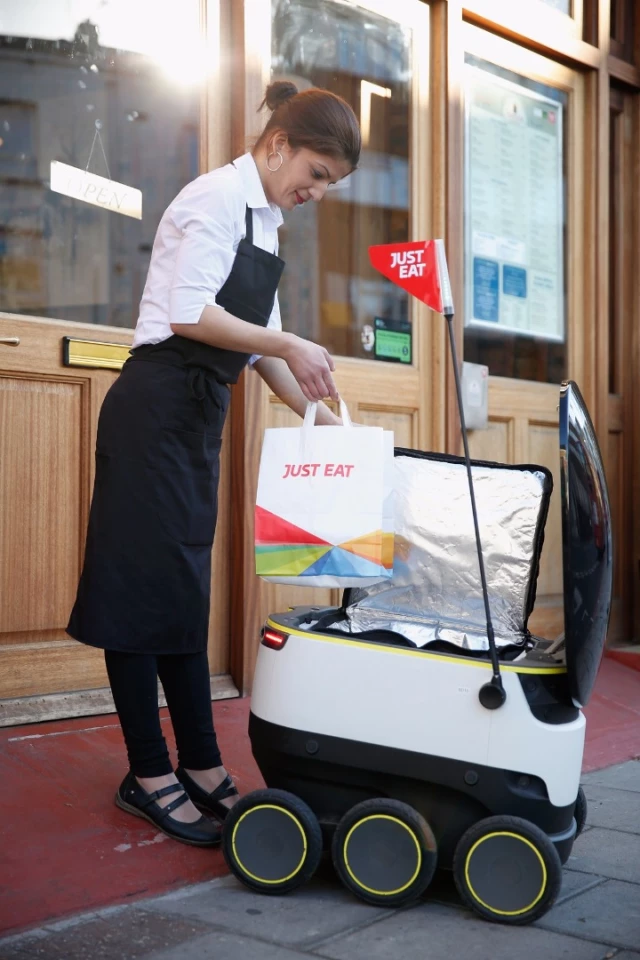
Just Eat customers in Greenwich can't elect to have their food delivered by a robot, but the company plans to increase the number of deliveries it is making with them in the area. It also plans to expand the program across London next year.
Starship has been trialing the robots in the US too, where a first demo delivery, with a predefined order and without proper system integrations, has been from a cafe in Redwood City, California, to a nearby home.
Sources: Just Eat, Starship Technologies
